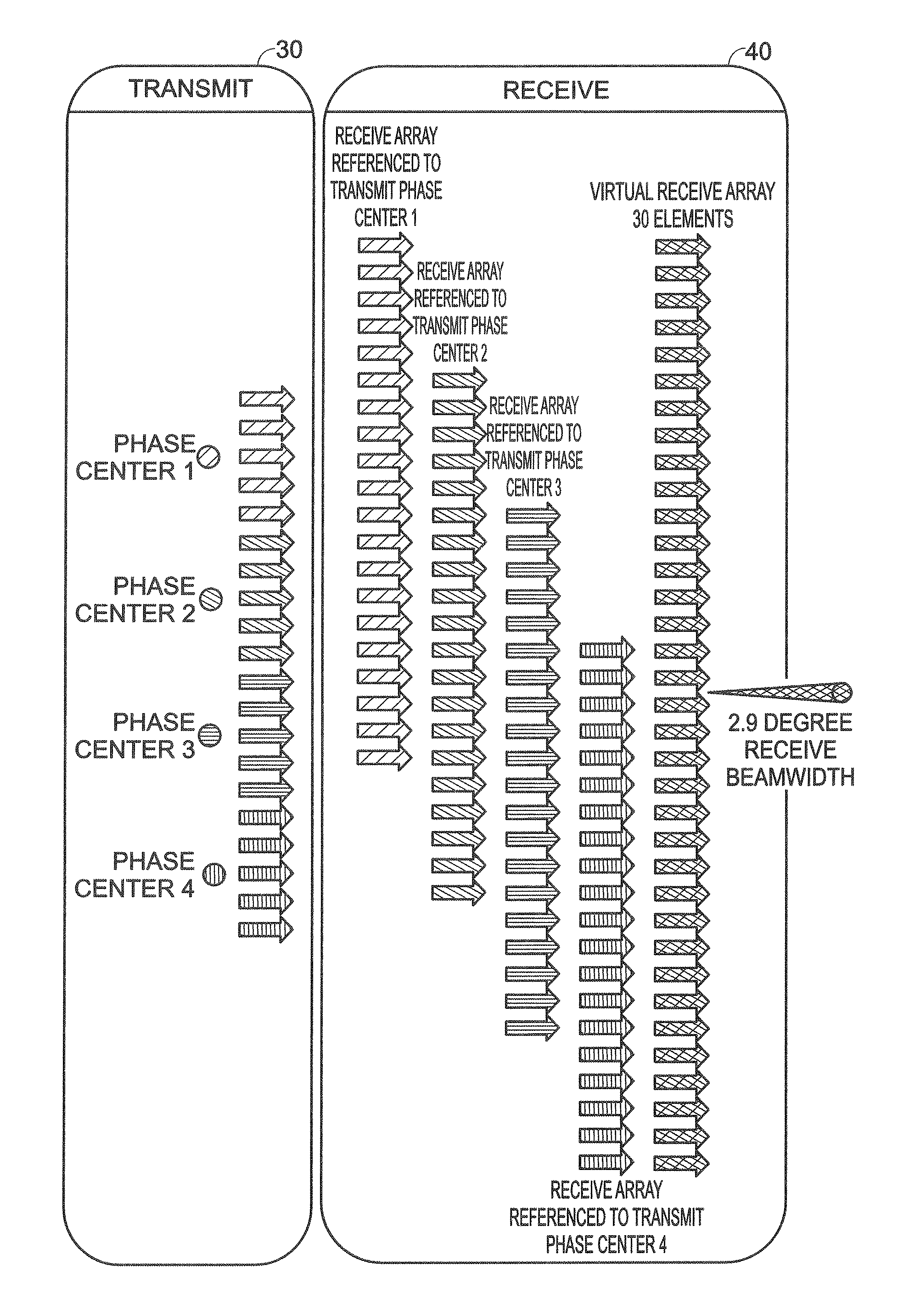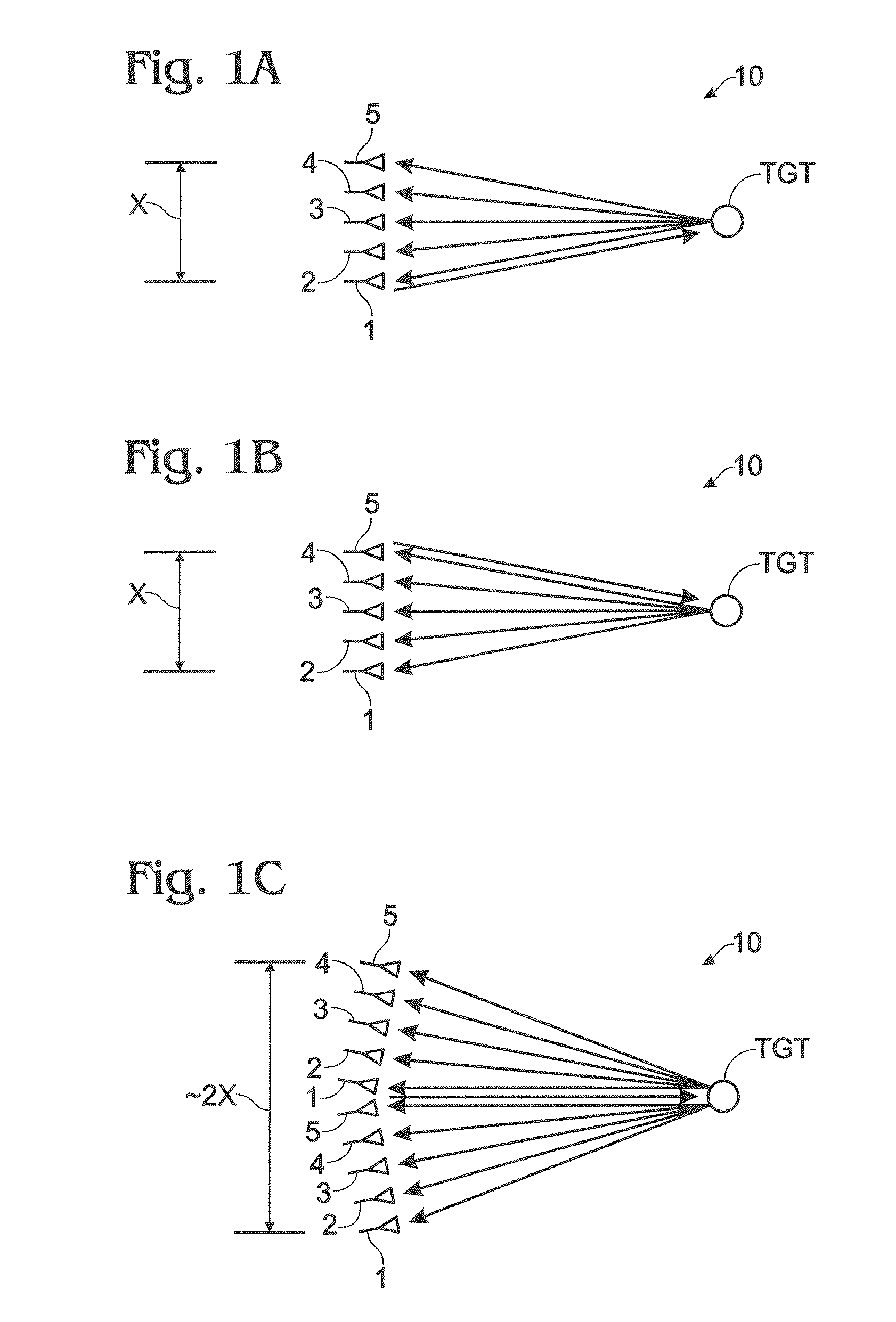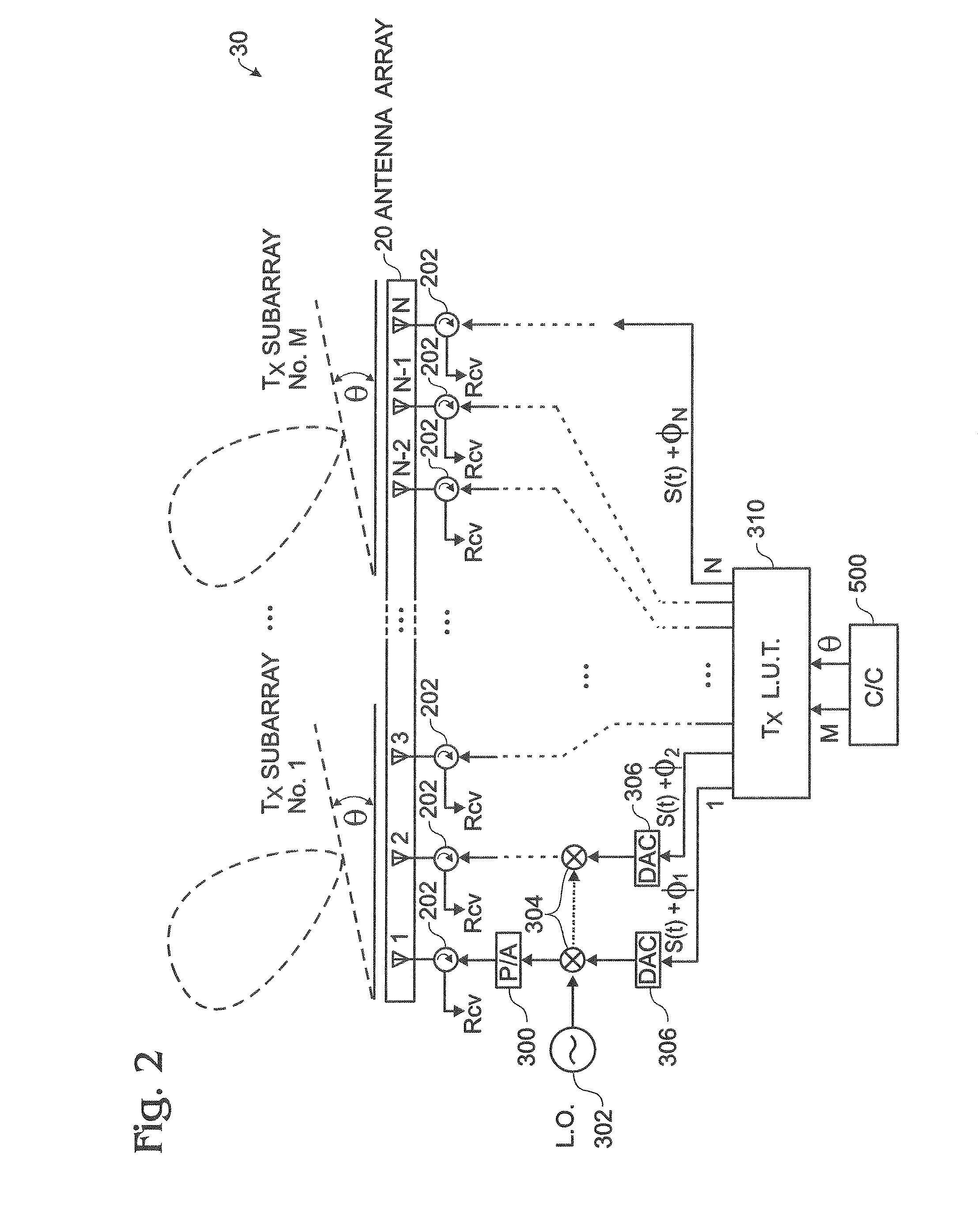Radar architecture
a radar and antenna technology, applied in the field of radar systems, can solve the problems of system failure, system wearout and breakage, and the influence of amplitude and phase of radio waves, and achieve the effect of eliminating the drawbacks associated with the operation of the antenna
- Summary
- Abstract
- Description
- Claims
- Application Information
AI Technical Summary
Benefits of technology
Problems solved by technology
Method used
Image
Examples
Embodiment Construction
[0030]Reference will now be made in detail to the present embodiments of the invention, examples of which are illustrated in the accompanying drawings. Wherever possible, the same reference numbers will be used throughout the drawings to refer to the same or like parts. An illustrative embodiment of the radar architecture of the present invention is shown in FIG. 1, and is designated generally throughout by reference numeral 10.
[0031]As embodied herein, and depicted in FIGS. 1A-1C, a diagrammatic depiction of a virtual array in accordance with the present invention is disclosed. FIGS. 1A-1C show a linear array of five antenna elements 1-5 and illustrates the benefit of using multiple transmit subarrays. In FIG. 1A, antenna element 1 is used as both a transmit phase center and a receive element. Antenna elements 2-5 are only used to receive. In FIG. 1B, antenna element 5 is used as both a transmit phase center and a receive element. Antenna elements 1-4 are only used to receive. If e...
PUM
 Login to View More
Login to View More Abstract
Description
Claims
Application Information
 Login to View More
Login to View More - R&D
- Intellectual Property
- Life Sciences
- Materials
- Tech Scout
- Unparalleled Data Quality
- Higher Quality Content
- 60% Fewer Hallucinations
Browse by: Latest US Patents, China's latest patents, Technical Efficacy Thesaurus, Application Domain, Technology Topic, Popular Technical Reports.
© 2025 PatSnap. All rights reserved.Legal|Privacy policy|Modern Slavery Act Transparency Statement|Sitemap|About US| Contact US: help@patsnap.com



